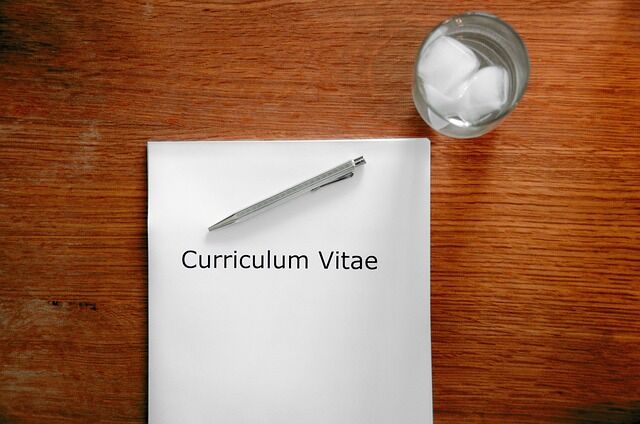You wrote the book – now it’s time to transform your first draft into a polished final version ready to captivate readers. Editing your own book is a key step in the journey to becoming a published author. While editing can feel tedious, especially for creative writers, it’s what transforms your raw manuscript into a polished work ready for readers. Self-editing requires patience, organization, objectivity, and dedicated time to methodically strengthen your storytelling.
This comprehensive guide leads you through the entire process of self-editing your book, from initial mindset shifts to nit-picky final proofreading. Follow these 12 expanded steps to systematically improve your manuscript:
Step 1: Let Your Manuscript Rest
Before editing, resist peeking at your draft for weeks or even months after completing your final chapter. This break allows you to return with refreshed eyes to evaluate the writing more objectively, as if reading another author’s work. Disconnecting lets initial excitement and fatigue fade so you can better identify weaknesses. Distance reveals flaws impossible to see in daily writing grind. Set calendar reminders to prevent cheating.
Step 2: Assemble Your Editing Toolkit
Gather key tools to enable an efficient, effective editing process. Software capabilities like Microsoft Word search functions minimize repetitive tasks. Style sheets help continuity tracking of subtle worldbuilding details. Recruit trustworthy beta readers representing your target demographic and listen openly to critique. Other useful tools include colored highlighters to color-code issues, comprehensive editing checklists to guide analysis, grammar resources like The Chicago Manual of Style or subscription sites, and genre style guides to ground stylistic choices in reader expectations.
Step 3: Start with Big Picture Editing
Initially, focus on strengthening sweeping foundational issues with structure, characters, plot, pacing, settings, and prose before line editing at the sentence level later. Reread your entire manuscript, assessing the overall flow and reader experience. Fix major flaws, and revision needs exposed when evaluating if scenes logically build, characters demonstrate consistency, and descriptions immerse rather than overload readers. Granular edits come after shaping global architecture.
Step 4: Evaluate Structure & Outline Beats
Assess whether plot sequencing, turning points, and scene builds effectively move your story forward to satisfy reader expectations of setups paid off. Analyze chapter construction regarding rising action placement, climax placement in keeping with genre norms, and winding down denouements. Reference story structure guide outlines as needed. Identify and delete unnecessary scenes bogging momentum, no matter how brilliantly written. Add missing transitions connecting story beats into seamless plot progression. Rearrange poorly placed chapters or scenes failing optimal reader engagement.
Step 5: Analyze Character Arcs & Motivations
Review the protagonist, antagonist, and supporting character progressions from introduction through to resolution. Highlight backstory integration and emotional growth believability throughout the arc. Pinpoint any head-scratching behaviors seeming out of character compared to your deep knowledge of their history and personalities. Ensure expressed viewpoints remain consistent with established backgrounds. Verify relationships, dialogue exchanges and behaviors align with who characters are shown to be, or intentionally contrast for growth. Fix inconsistencies undermining connection.
Step 6: Check Plot Causality & Payoffs
Verify central story events logically stem from preceding actions without overly convenient coincidences overriding believability. Outline cause-effect links confirming satisfactory explanations later for every mystery or raised question readers anticipate resolving. Account for surprising twists properly foreshadowed in advance threaded clues. Fill gaps in plot logic weakening causal links between challenges faced and triumphant or tragic outcomes. Tie up loose ends still dangling unresolved unless intentionally left ambiguous.
Step 7: Refine Setting Descriptions & Transitions
Evaluate fictional worldbuilding unique details and sensory descriptions against genre standards and rival comparable works your book strives to match or exceed for reader immersion. Ensure settings maintain logical consistency with exceptions clearly established like shifting magic system rules or time travel tales. Vividly anchor major scenes with physical environmental cues and emotional resonance noted. Punch up thin transitional passages between chapters and time lapses, inadequately bridging key scenes.
Step 8: Polish Prose for Clarity & Consistency
Critique sentence structures, vocabulary usage, imagery contrasts and paragraph composition. Check for overly complex run-on sentences mudding intended meanings. Flag redundant descriptive passages or confusing dialogue exchanges using too much niche “writerly” prose versus straightforward immersive narration and conversation. Note any style shifts deviating from your characteristic author voice. Eliminate filter words distancing readers from immediacy of actions depicted. Examine paragraph lengths varying appropriately between long immersed and quick punchy beats.
Step 9: Fix Grammatical Errors & Typos
Eliminate bad habits like passive constructions, misplaced modifiers and unintentional point-of-view shifts in need of repairs undermining writing authority. Correct misspellings of character names, fictional terms, double word repeats, punctuation miscues, capitalization inconsistencies and similar technical problems swiftly spotted using editing software tools like AutoCrit and Grammarly in addition to personal proofing.
Step 10: Use Search Functions for Global Finds & Fixes
Harness technology assistance through Microsoft Word and specialty editing software to efficiently handle global search-and-replace actions correcting repeated crutch terms overused throughout an entire 400-page fantasy tome. Quickly eliminate the same term misspelled differently across multiple chapters. Adjust punctuation and formatting styling needing standardized application from prologue through to epilogue appendix. No need to separately catch each instance. Automate for consistency.
Step 11: Listen to Your Book’s Reading Cadence
Utilize text-to-voice tools built into Word and other programs to play back selected passages aloud. Listening versus silent visual appraisal often exposes awkward phrasings, tongue-twisting sentences and passages lacking lyrical flow unnoticed while reading silently. Make edits to smooth out clunky transitions between paragraphs, off dialogue exchange rhythm, and unintentionally “speed-bumpy” descriptions upsetting reading pace flow. Let ear catch what eye may gloss over.
Step 12: Proofread Final Formatted Version
Apply finishing spit-shine polish in a final editing pass after incorporating all prior revisions and converting into distribution format – whether uploaded ebook file, print galleys or audiobook recording scripts. Scrutinize in desired finished product form, checking header numbers, chapter titles, page layouts, listening to narrator interpretations and catch any last typos or layout quirks undermining professional presentation.
The Next Steps After Self-Editing…
Completing self-editing represents a tremendous milestone. Pat yourself on the back for seeing the arduous editing process through to the end. Bask briefly in this sense of achievement. Then prepare to carry your refined work out into the world.
With your sharpened manuscript in hand, start seeking publication by: identifying prospective literary agents or appropriate small presses for your genre and platform; compiling compelling query letters, including impressive editing efforts made; targeting submissions to vetted book publishers accepting unsolicited manuscripts; and persevering through potential rejection towards ultimately attracting a receptive editor.
Meanwhile, continue writing, armed with an expanded self-editing skillset promising ever-increasing writing success. Trust the editing journey – done well it leads every determined author towards publishing dreams fulfilled.
Common Self-Editing Pitfalls & Challenges
Watch for these problematic issues that can derail the self-editing process:
Getting Overly Close to Your Work
The downside of author intimacy with conceived characters and meticulously constructed settings remains danger of only seeing your perfect creative vision rather than objectively evaluating a reader’s experience of flaws needing improvement during editing. Regularly step back via objectivity breaks to regain perspective.
Making Excessive Major Revisions
A common editing mistake involves attempting overly extensive structural reworking or character alterations straying too far from the core vision that excited you enough to launch writing this particular book in the first place. Change is essential for improvement but not at the expense of passion fueling successful completion. Prioritize necessary changes over total reimagination.
Seeking Perfection
Realize no book gets everything completely “right” according to every picky reader’s subjective standards. Establish achievable goals for self-editing success – tell an engaging story readers emotionally connect with rather than fixing every awkward clause or minor plot hole. Letting perfectionism lead to analysis paralysis inhibits finishing.
Ignoring Beta Reader Feedback
Valuing supportive commentary too much while dismissing constructive critical feedback risks retaining issues better addressed now than after publishing when volume of responses increases exponentially. But also avoid over-correcting simply to please beta readers if it means harming what makes your voice unique.
Hand-Picking Your Future Editing Team
Working with skilled editors mutually invested in your creative success remains vital not just through debut launch but also long-term career longevity as an author. Research candidate compatibility during self-editing to streamline selecting ideal editing partners suiting your writing style and specific book goals.
Becoming Discouraged
Persist despite the challenging, time-consuming nature of self-editing. The deepest learning experiences often involve overcoming struggle. Expect setbacks but view them as opportunities for self-improvement, not reasons to quit. Trust that dedicating effort to sharpen a manuscript prepares future writing success.
When to Skip Self-Editing and Hire a Pro
While self-editing plays an important role for authors, there are certain situations where it pays to skip DIY editing and bring in a professional right away:
You Lack Objectivity
Being overly attached to your own writing makes it almost impossible to effectively self-edit. If you know you struggle to kill your darlings, then seeking outsider editing provides the objectivity you lack. Fresh eyes not invested in pages labored over for years increases honesty.
The Stakes Are High
If you’re investing significant funds towards self-publishing or this is make-or-break for your traditionally publishing aspirations, professional editing becomes a wise investment, increasing quality and marketability. Better hiring support upfront than regretting avoidable mistakes later.
Tight Timeline
Editing properly takes time, especially if undertaking structural revisions. With looming deadlines like publishing contracts requiring polished submissions within weeks, offloading needs experts can fulfill faster proves prudent time management.
Weak Grammar Skills
Be honest about your abilities. If you struggle grasping punctuation nuances, dialogue mechanics, or catching typos, pass that editing baton instead of submitting a sloppy manuscript immediately rejected. Even creative geniuses need assistance elevating their writing’s presentation.
Specialized Scope
Certain editing specializations, like line editing, clause-by-clause prose tweaks, or checking series bible canon consistency, may exceed self-taught capabilities. Also, statistical analysis tools for identifying overused words require software beyond Word. Know limitations!
Of course, if funds are tight, self-editing still greatly improves quality. But reaching publishing goals sometimes warrants acknowledging the gaps best filled by book editing experts with fresh eyes, industry savvy, and specialized training. The right editor partners alongside you for success.
Conclusion
The self-editing journey requires immense effort, but pushes your writing skills to new heights. While the road to polished prose is long, committing to the journey will elevate your manuscript from rough draft to publication-ready masterpiece. When doubt or fatigue strikes, remember why you wrote this book and let your creative fire reignite passion.
With a robust editing toolkit, determination to strengthen your work, and knowing when to call on editing pros, you can transform your story into the bright star readers will fall in love with. This may be the first book, but not the last, as mastering self-editing lays the foundations for successful authorship.
Each tiring step brings you closer until finally holding your published book in hand makes every late-night wrestling with revisions worthwhile. So keep believing and persevere through the process – by giving your all to skillful editing, any motivated wordsmith can become a published author. Now boldly venture forth through the final rounds of self-editing—towards achieving your wildest writing dreams!




